화성습지에서 북상하는 큰뒷부리도요 무리를 배웅하며
큰뒷부리도요와 알락꼬리마도요를 배웅하다
지난 5월 12일이었습니다. 그날도 새와생명의터 대표이신 나일 무어스 박사님과 화성습지 FNS에서 물새 조사를 하고 있었습니다. 때는 해가 뉘엿뉘엿 저물기 전 저녁 6시경이었어요. 도요·물떼새들이 화성호에서 쉬고 있는 걸 관찰하며 다시 한 번 개체수를 세고 있었는데요. 큰뒷부리도요 무리 중 일부가 끊임없이 서로 신호를 보내는 거예요. 그 소리가 점점 커졌습니다. 무슨 일이지?
끼끼끼끼 끼끼끼끼 끼끼끼끼 끼끼끼끼 (제 귀에는 이렇게 들렸어요^^;;;)
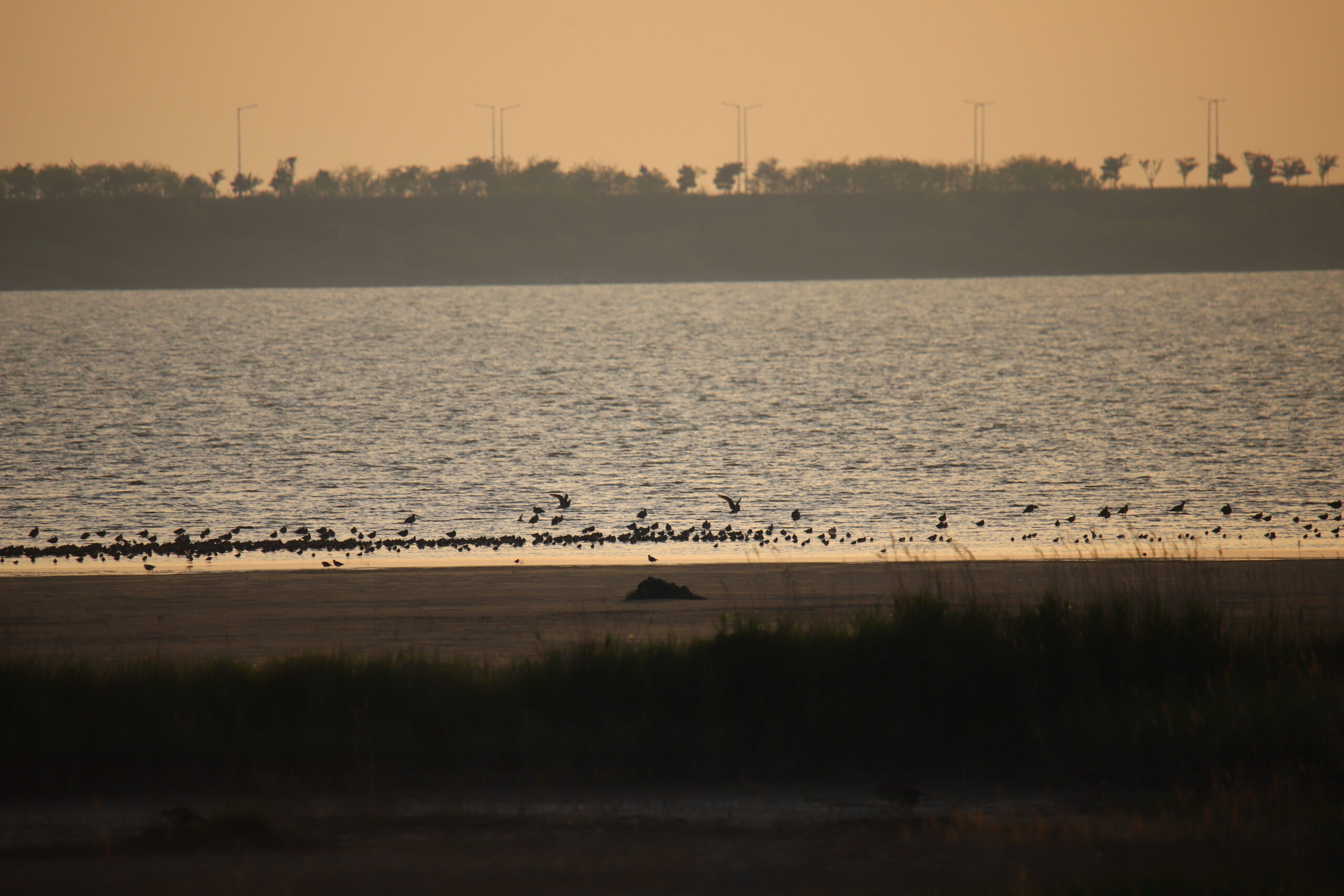
무어스 박사님이 조용히 알려주십니다. 저들은 곧 떠날 거다. 그동안 화성습지에서 잘 먹고 잘 쉬어서 에너지를 충분히 비축했다. 날씨는 안정되었고, 바람의 방향도 좋다. 도요들은 보통 해질녘 이주 비행을 시작한다. 소란도 방해도 없기 때문이다. 지는 해를 보며 방향을 식별하기 좋고, 달과 별이 길을 안내해 준다. 분명히 저들은 남쪽을 향했다가 선회하여 북쪽으로 날아갈 것이다.
박사님 설명이 끝나기 무섭게… 60~70마리쯤 될까? 계속해서 서로 소통하던 큰뒷부리도요 한 무리가 날아오릅니다. 그 모습이 여느 때와 다릅니다. 그들은 화성호 위를 빙글빙글 돌며 고도를 높여 갑니다. 그러다 V자 대형을 갖춰 정남쪽으로 방향을 틀었고 크게 돌아 북쪽을 향합니다. 이내 시야에서 사라집니다. 나는 계속 지켜보고 싶어 쌍안경을 이용하지만 결국엔 보이지 않아요. Northward Migration! 네, ‘북상’. 아마도 알래스카를 향한 이동의 시작입니다.
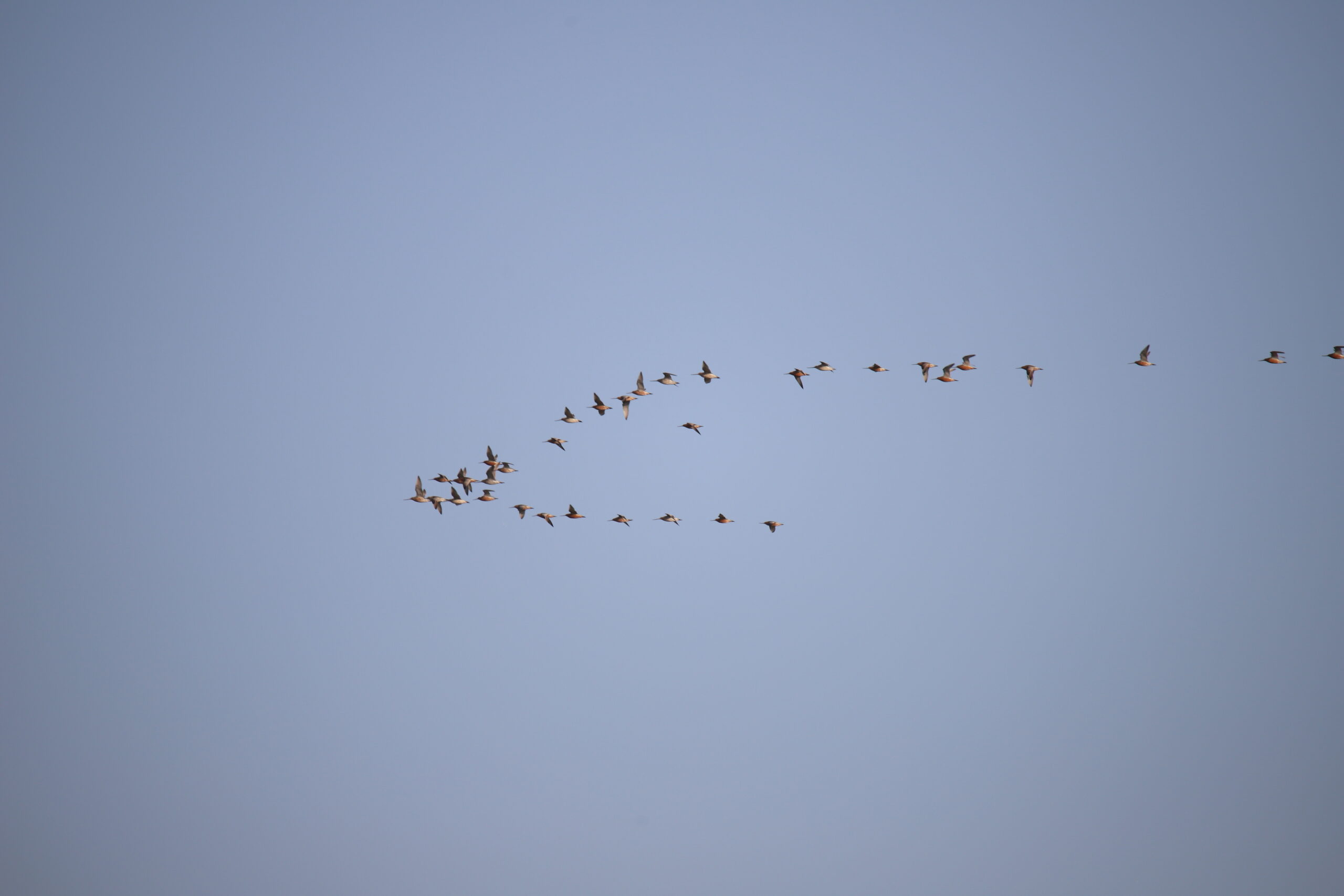
먼저 가서 암컷을 기다리는 큰뒷부리도요 수컷은 ‘사랑꾼’
곧이어 또 다른 떼가 날아오릅니다. 이번에도 비슷한 움직임을 보인 뒤 북을 향해 날아갔어요. 보다 큰 그룹이었어요. 200마리쯤 될까? 재밌는 건, 두 번 다 거의 전부가 수컷이었다는 점이에요. 첫 무리 때는 잘 못 보았고 두 번째는 불확실했는데 박사님이 설명해 주셨어요. 이어 또 한 무리가 날아올라 북상했고, 7시경에는 알락꼬리마도요 몇 그룹도 북상했습니다.

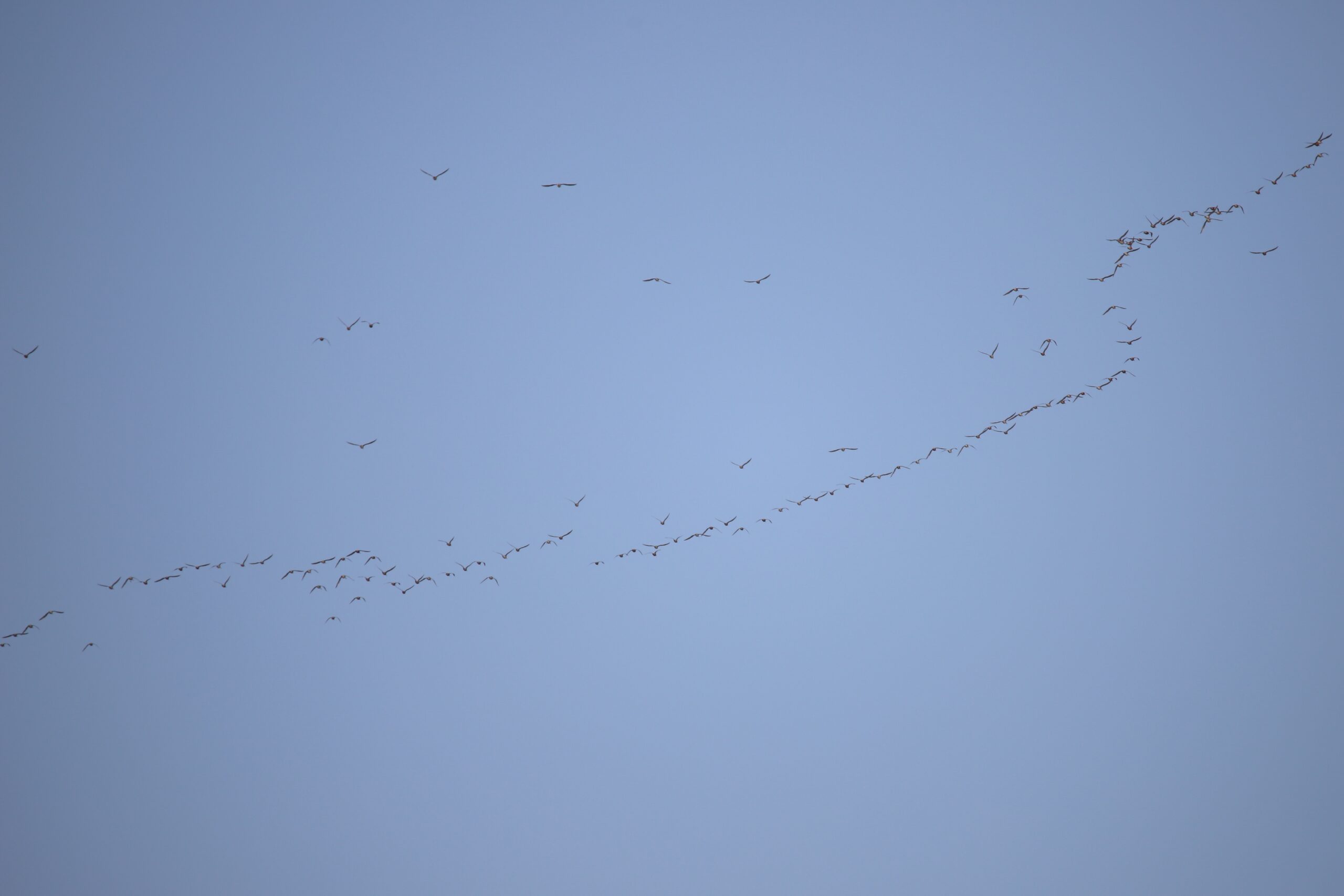
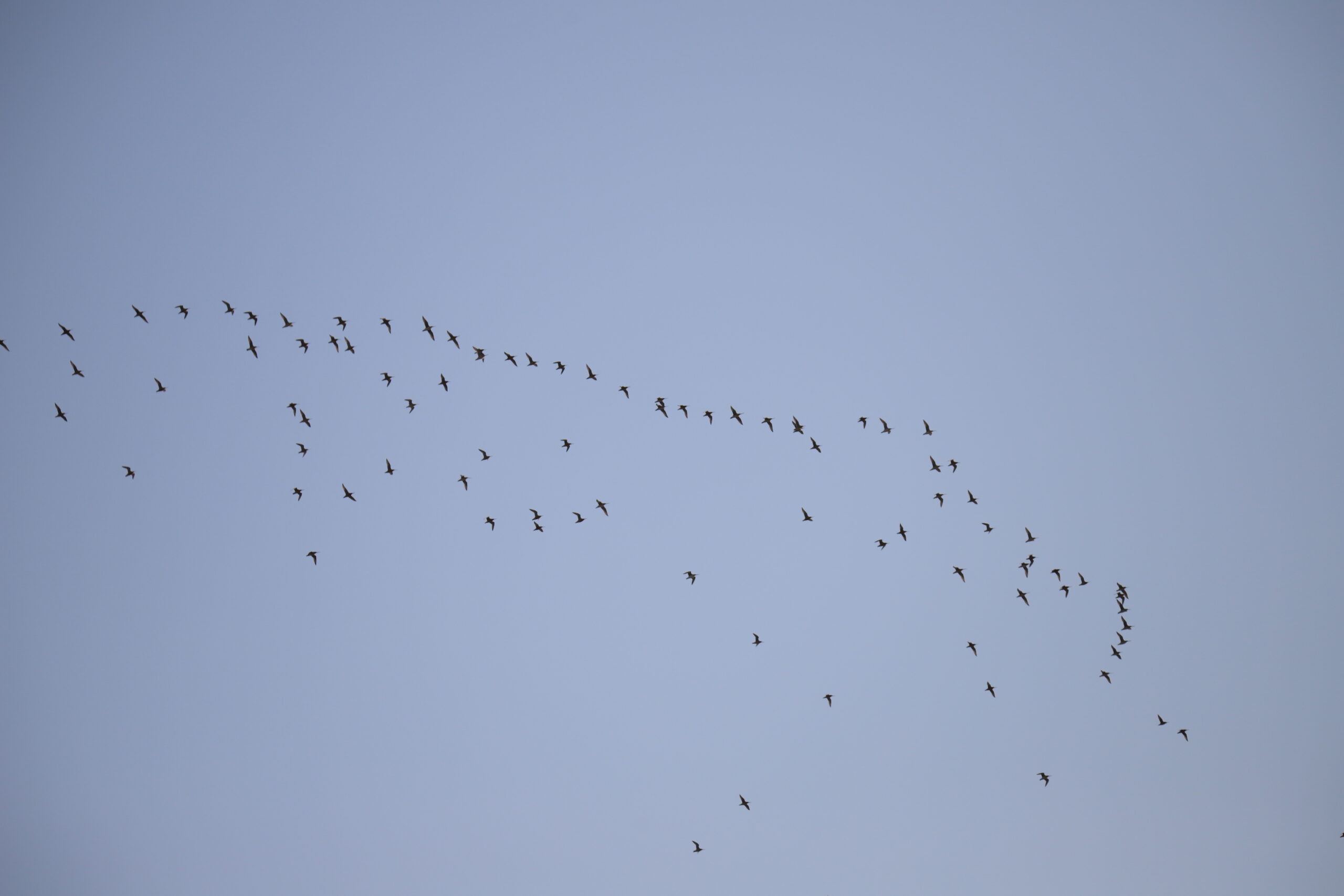
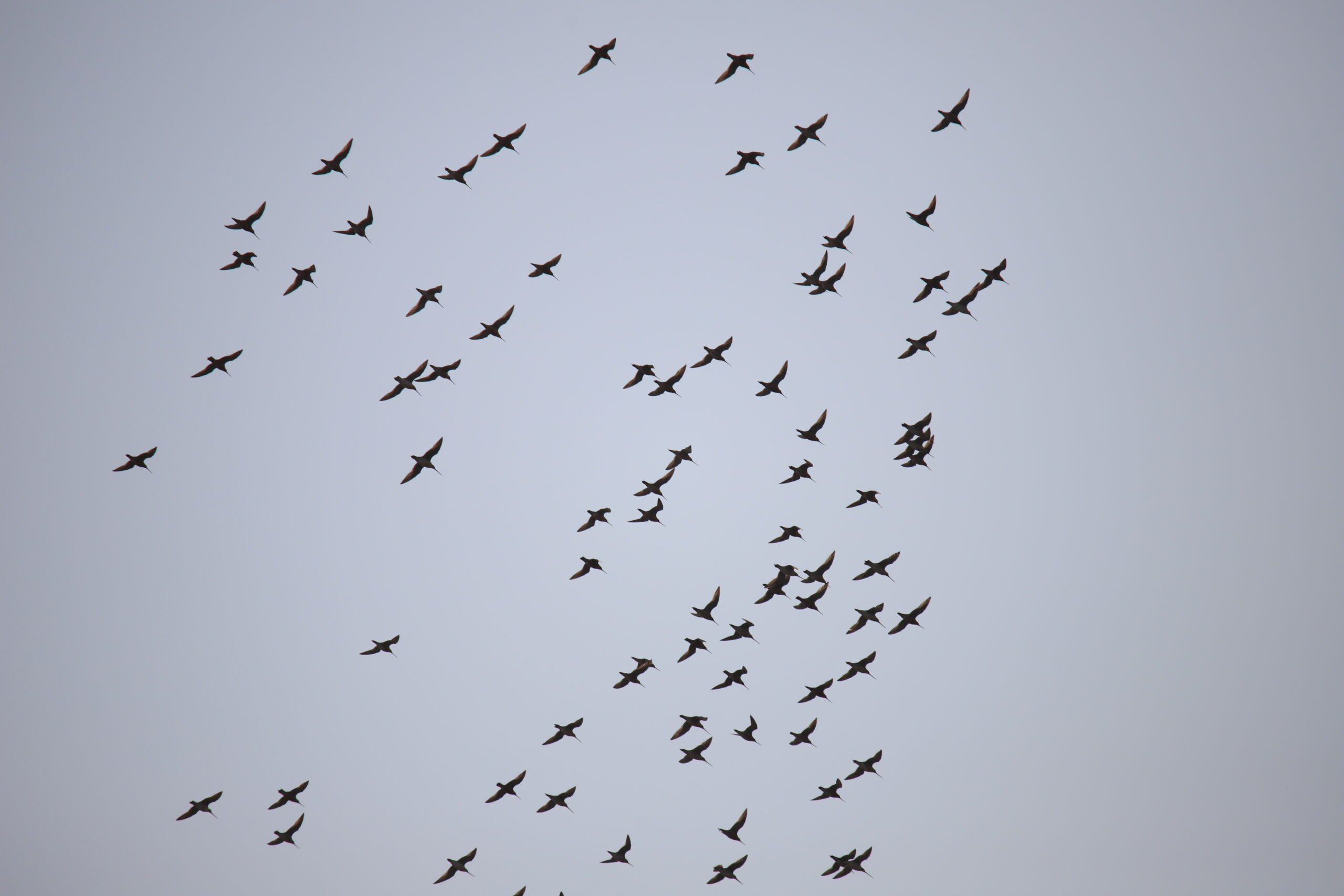
번식지에 수컷이 먼저 가는 이유: 무어스 박사님 말씀에 따르면, 수컷이 먼저 가서 영역을 정리하고 둥지를 만들어 암컷을 기다리기 위해서라고 해요. 아무나 만나서 짝짓기를 하고 알을 낳을까요? 아니요! 수컷은 지난해와 거의 비슷한 날짜에 동일한 곳으로 가서 동일한 짝을 기다리고, 암컷 역시 정확히 같은 곳을 찾아가 자기 남편(?)을 만난다고 해요. 놀라운 타이밍! 경이로운 방향감각입니다!!
남대서양 사우스조지아섬의 킹펭귄이 20만 마리 새끼 펭귄 가운데서 자기 새끼를 정확히 찾아내는 것처럼, 새들도 자신들만의 독특한 소리를 통해 서로를 알아보는 것 같습니다. 새들에겐 아마도 자신들 얼굴도 모두 달라 보이겠지요? 각자 이름도 있을까요?
이 또한 감동이었습니다! 올해 또다시 만나기를 기다리고, 그이와 만나기 위해 수천 수만 킬로미터를 목숨 걸고 날아간 셈이잖아요. 또 서로를 정확히 찾아낸다는 점도 놀라웠습니다. 사랑하는 이의 음성을 아는 세심함, 그를 그리워하고 알아차리는 예민함이라니…!
한 사람만 사랑하기로 약속하고 그만을 기다리는 모습은 얼마나 가슴을 뭉클하게 하는지요! 서로를 아끼고 가족을 돌보는 믿음과 의리, 서로 소통하며 협력하여 위대한 비행을 해내는 저들의 지혜와 용기… 이러한 사실을 알고 나니 자연의 숭고함에 절로 고개가 숙어집니다. 도요새가 더욱 사랑스럽습니다.
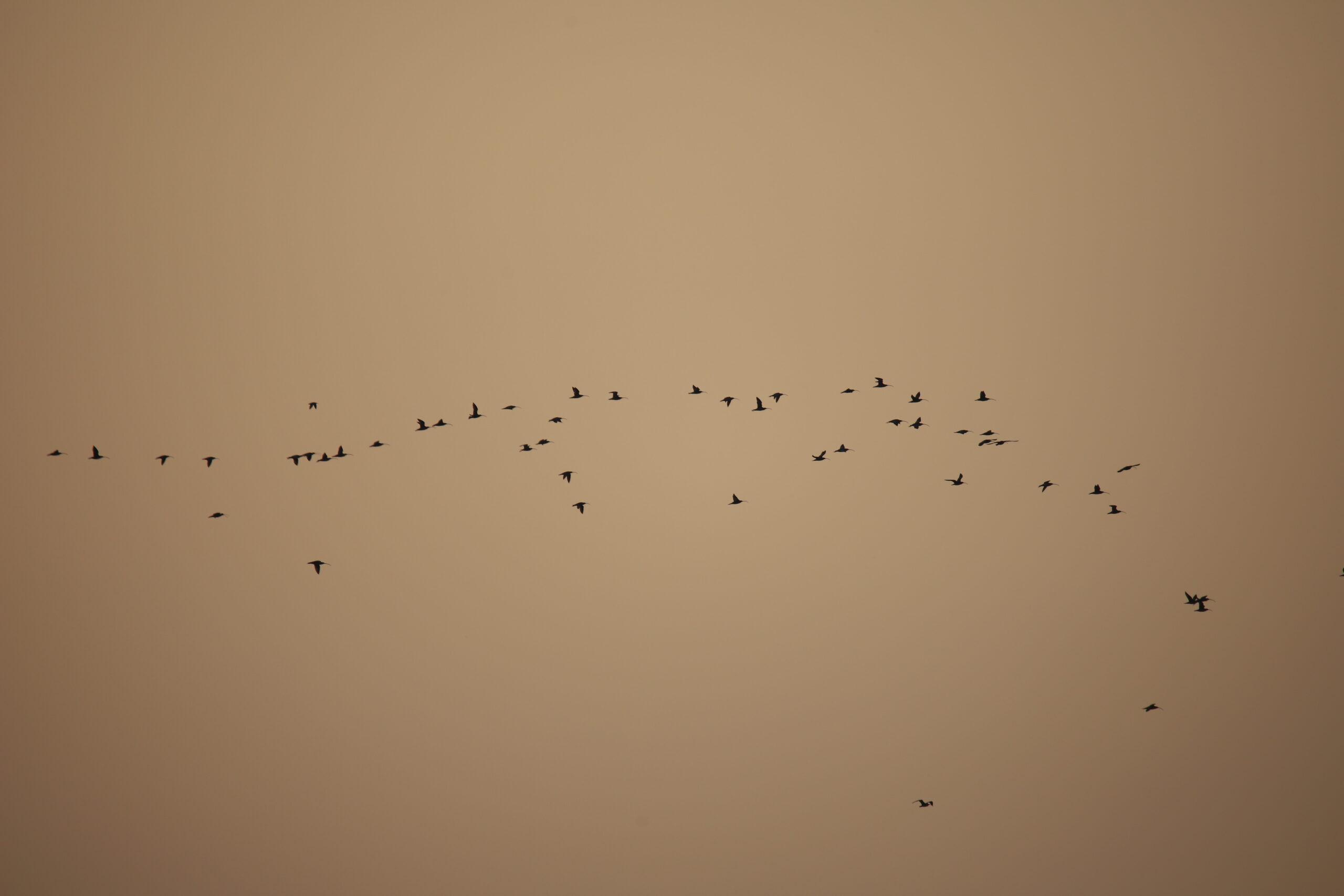
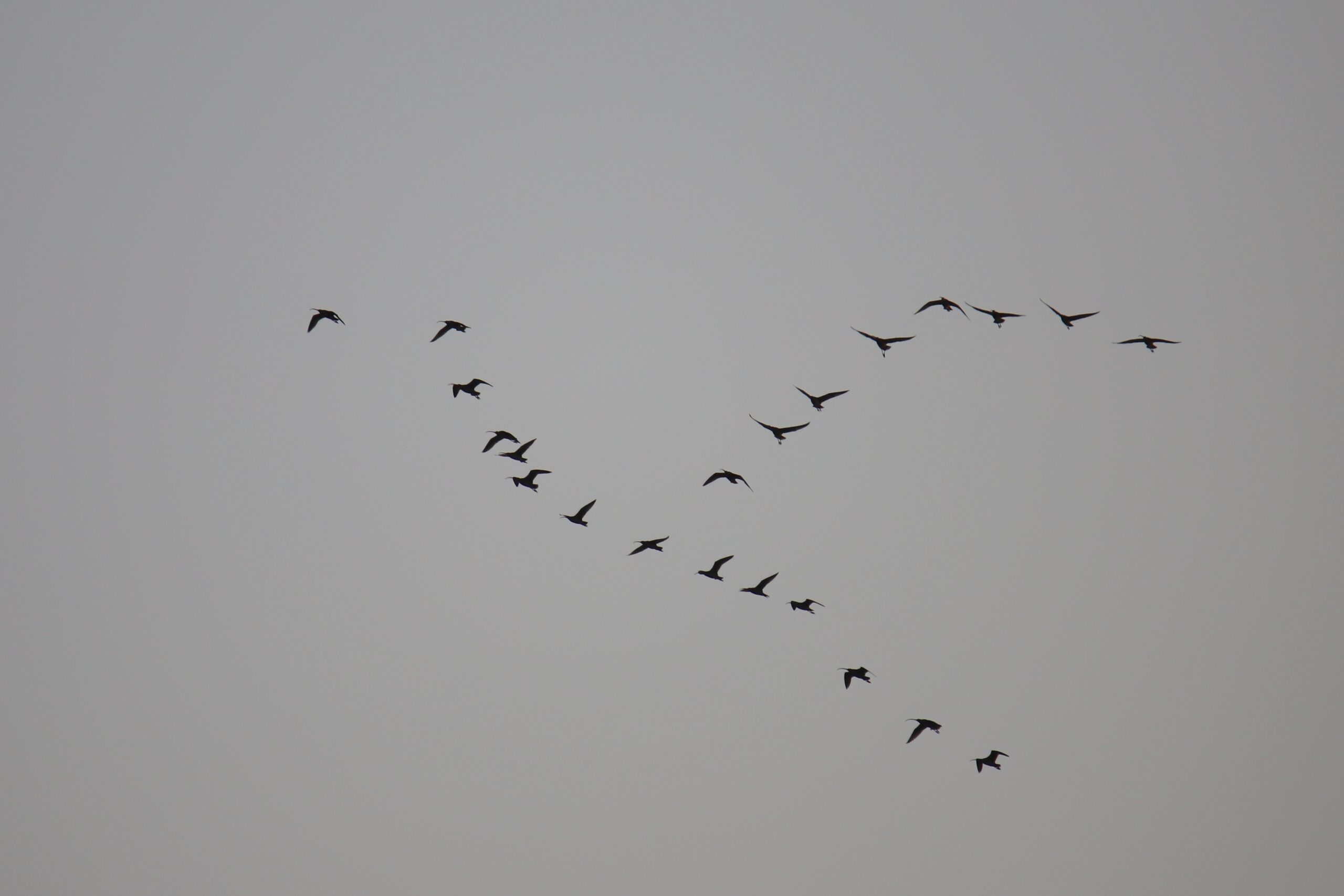
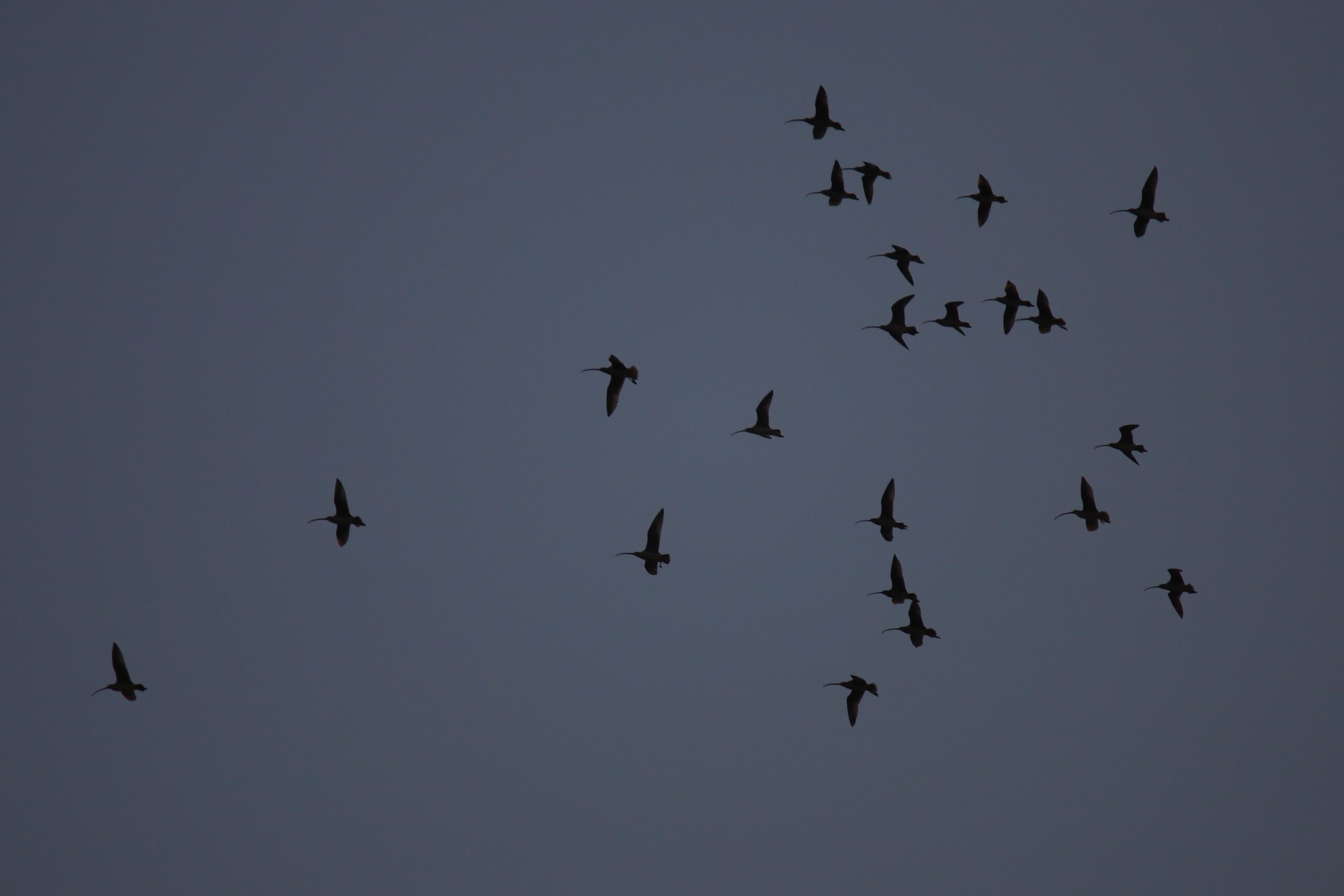
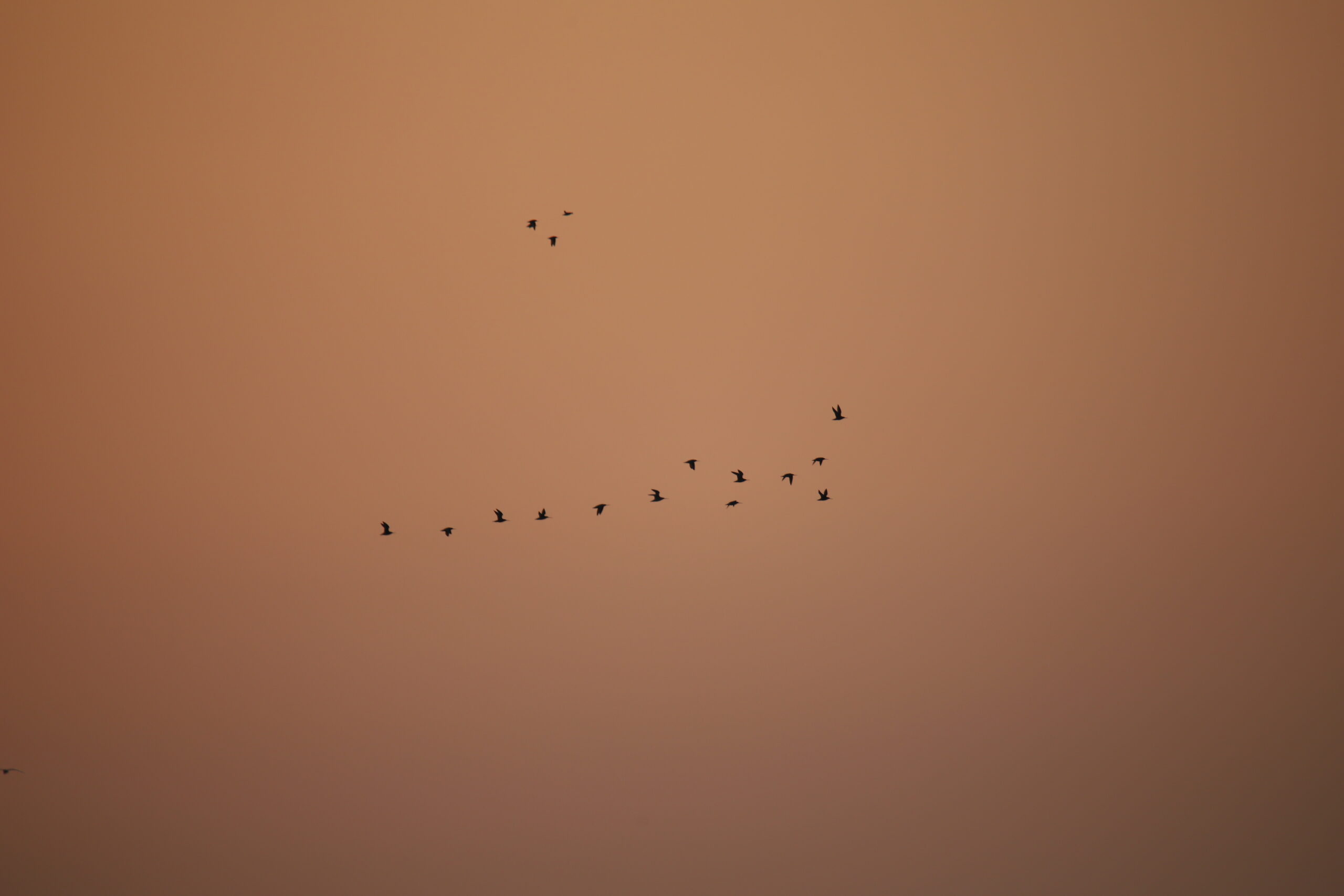
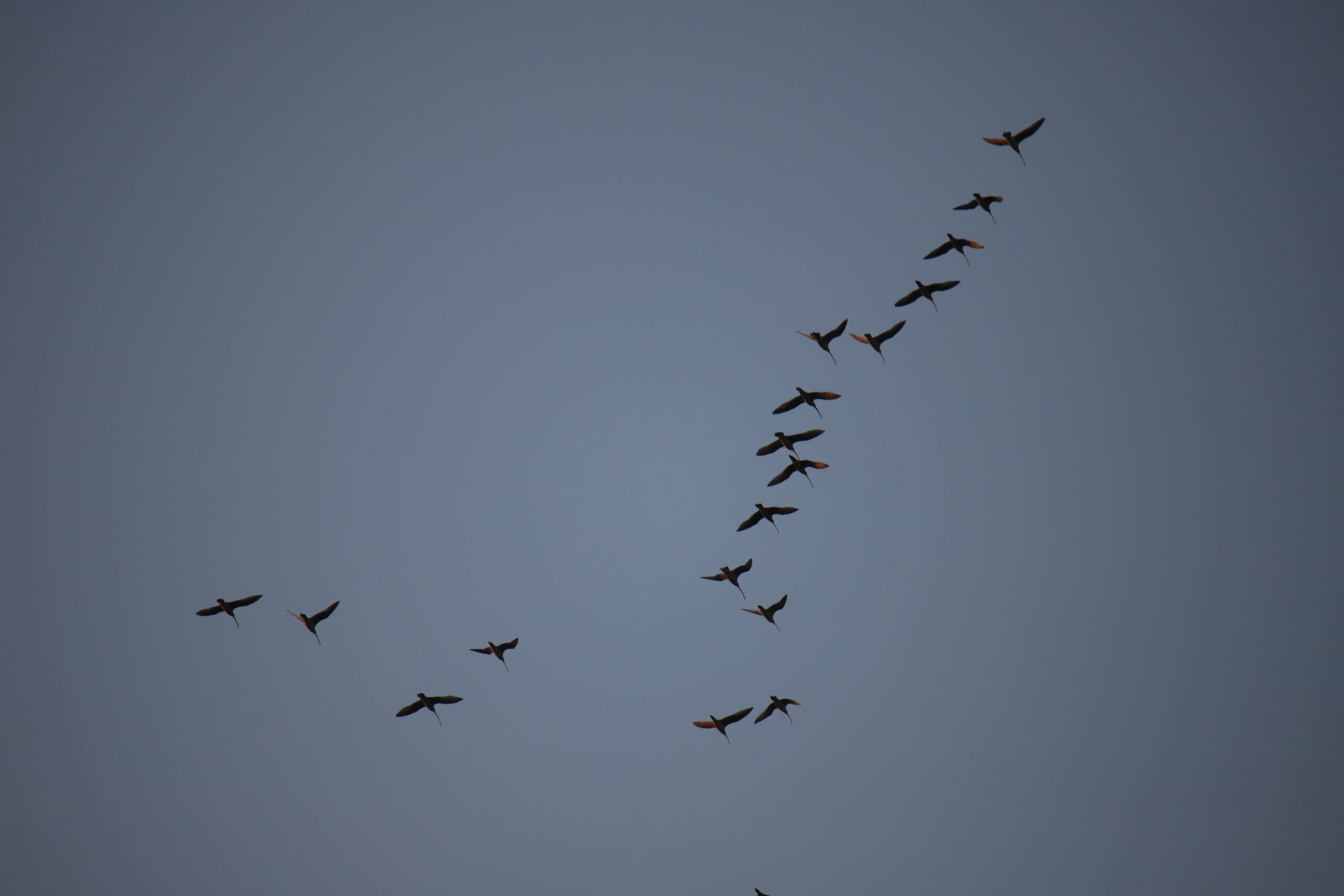
도요들이 사랑스러운 만큼 미안한 마음도 커지고
마음 한 구석이 무겁습니다. 보금자리를 만들어 놓고 암컷을 기다리는 큰뒷부리도요 수컷을 상상합니다. 그가 오래도록 기다리던 파트너를 끝내 만나지 못하면 어떡하지? 암컷이 오는 길에 사고를 당했거나 매 같은 천적에게 잡혔거나 자연재해를 만날 수도 있을 텐데… 특히 걱정되는 지점은, 매해 찾던 갯벌이 사라졌거나 교란이 너무 커서 암컷이 충분히 먹지 못하고 비행하다 목숨을 잃었다면? 어디선가 인간에게 사냥을 당했다면? 아아, 다른 암컷들이 속속 도착하고 사랑을 나눌 때 나의 그녀만 보이지 않는다면 얼마나 슬플까! 가슴이 시립니다. 만에 하나, 아니 자주 일어나곤 하는 ‘인간에 의한 고통과 슬픔’에 죄스러운 마음이 듭니다.
부끄러웠어요. 그동안 너무 인간의 관점에서만 자연을 바라봤어요. 나름 생태적인 삶을 살아왔다고 자부했는데, 제가 모른다는 이유로 엄연히 존재하는 저들의 속삭임과 소통, 사랑, 슬픔을 없는 걸로 여기며 살았어요. 이제라도 알게 되어 다행입니다. 새들의 울음소리, 그들의 지저귐을 언어로 받아들이고 이해하되, 상상과 추측만이 아닌 보고된 연구 자료와 오랜 경험을 통해 과학적으로 설명해 주는 나일 무어스 박사님과의 동행 덕분입니다.
얘들아, 우리 곧 다시 만나자!
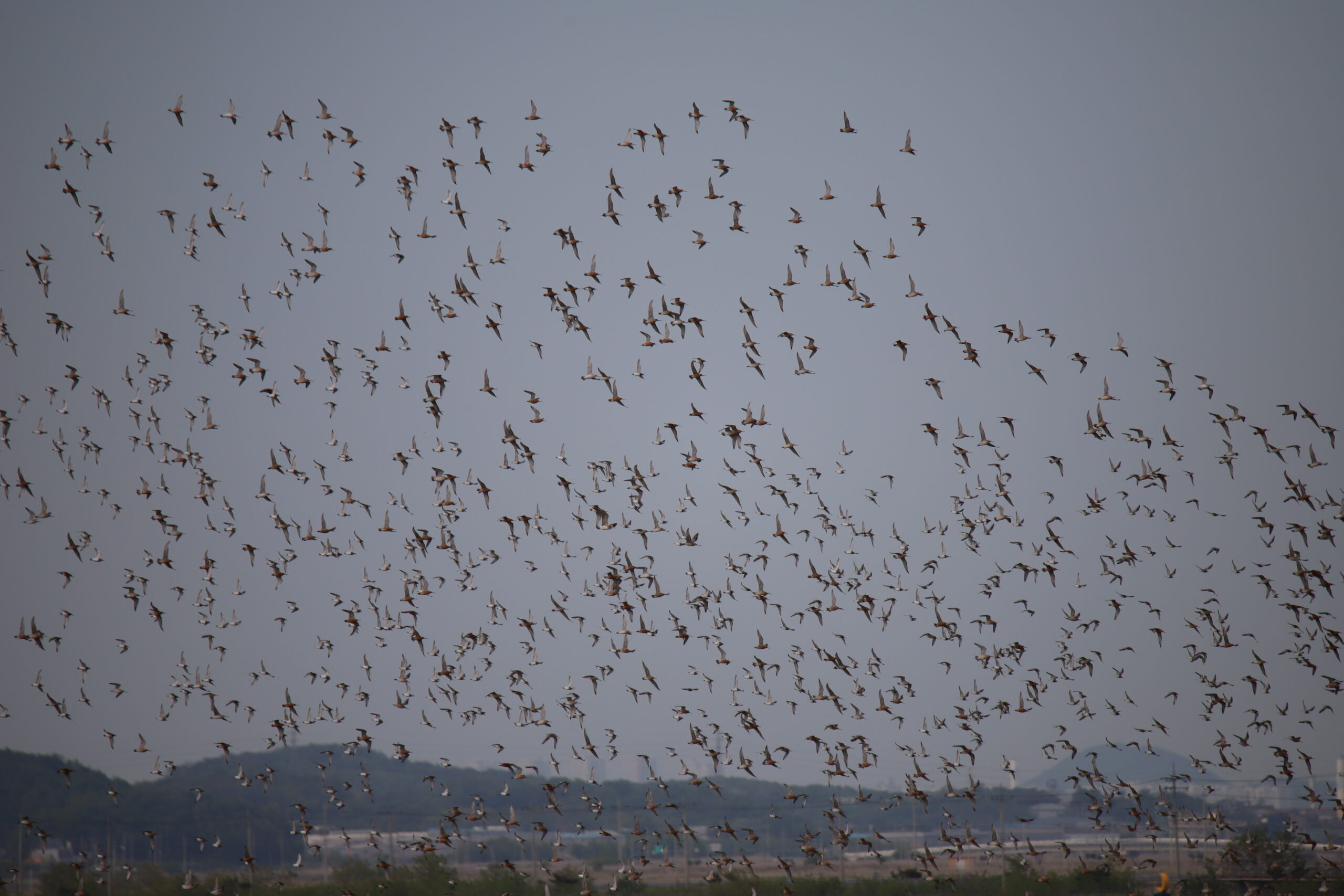
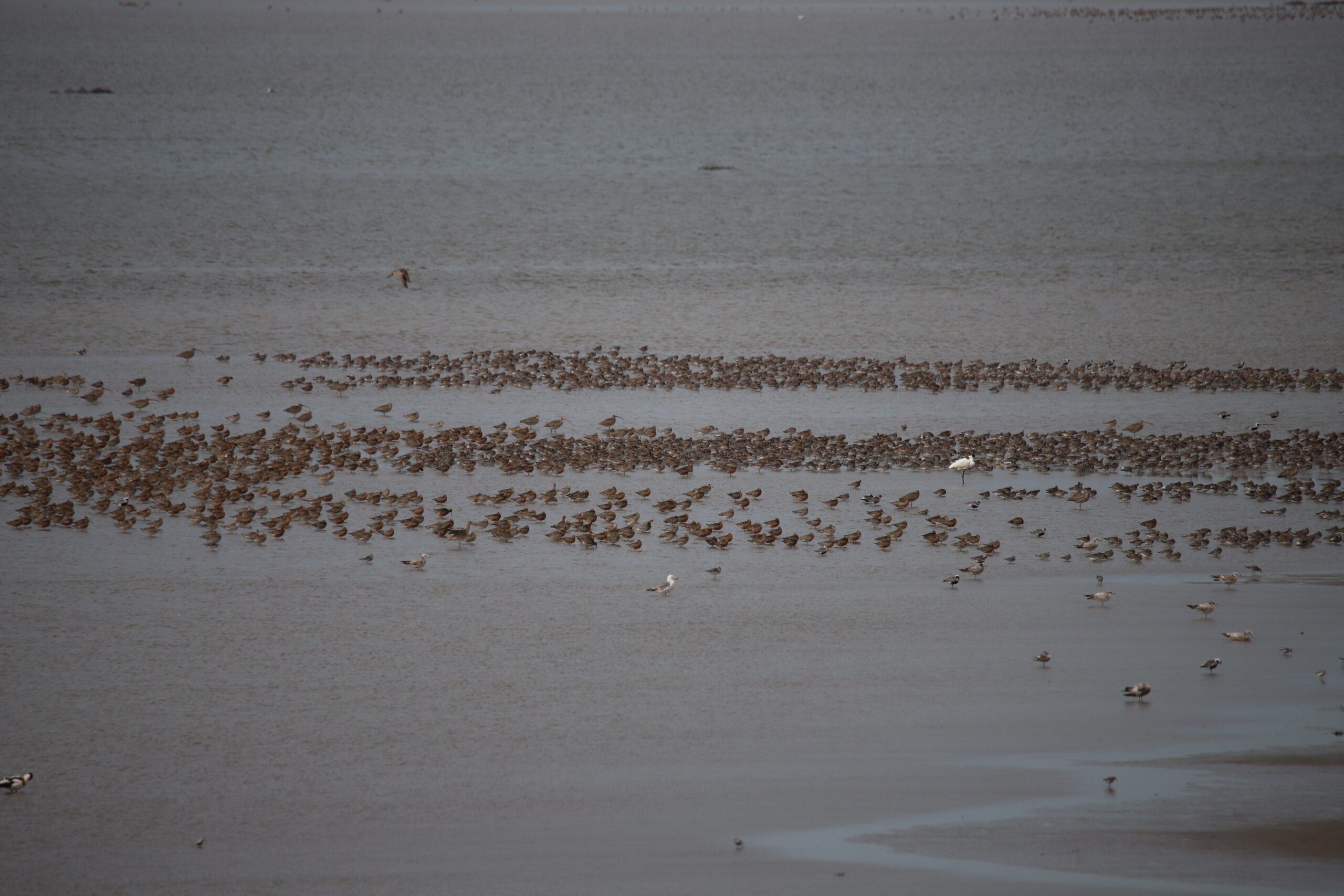
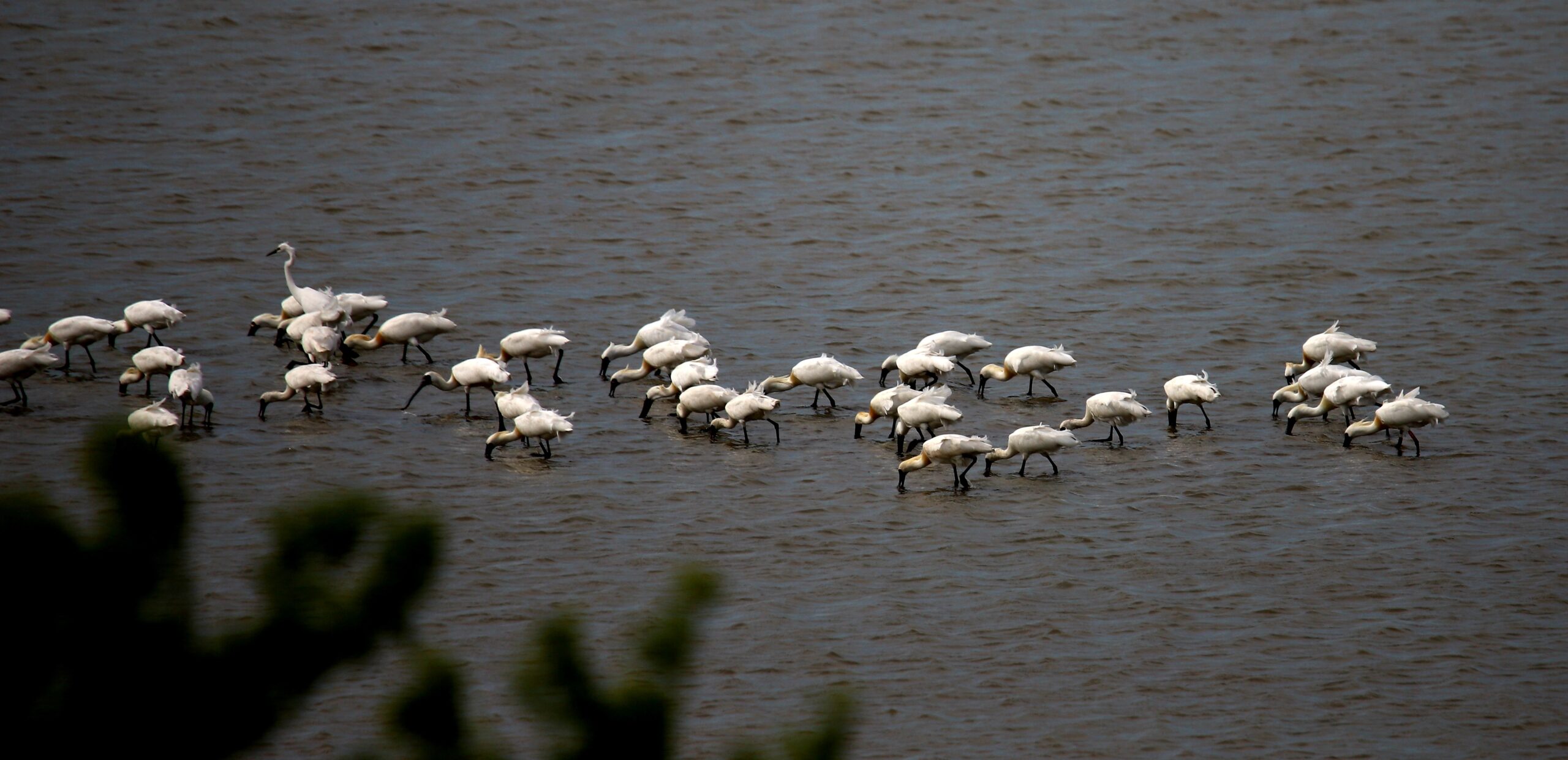
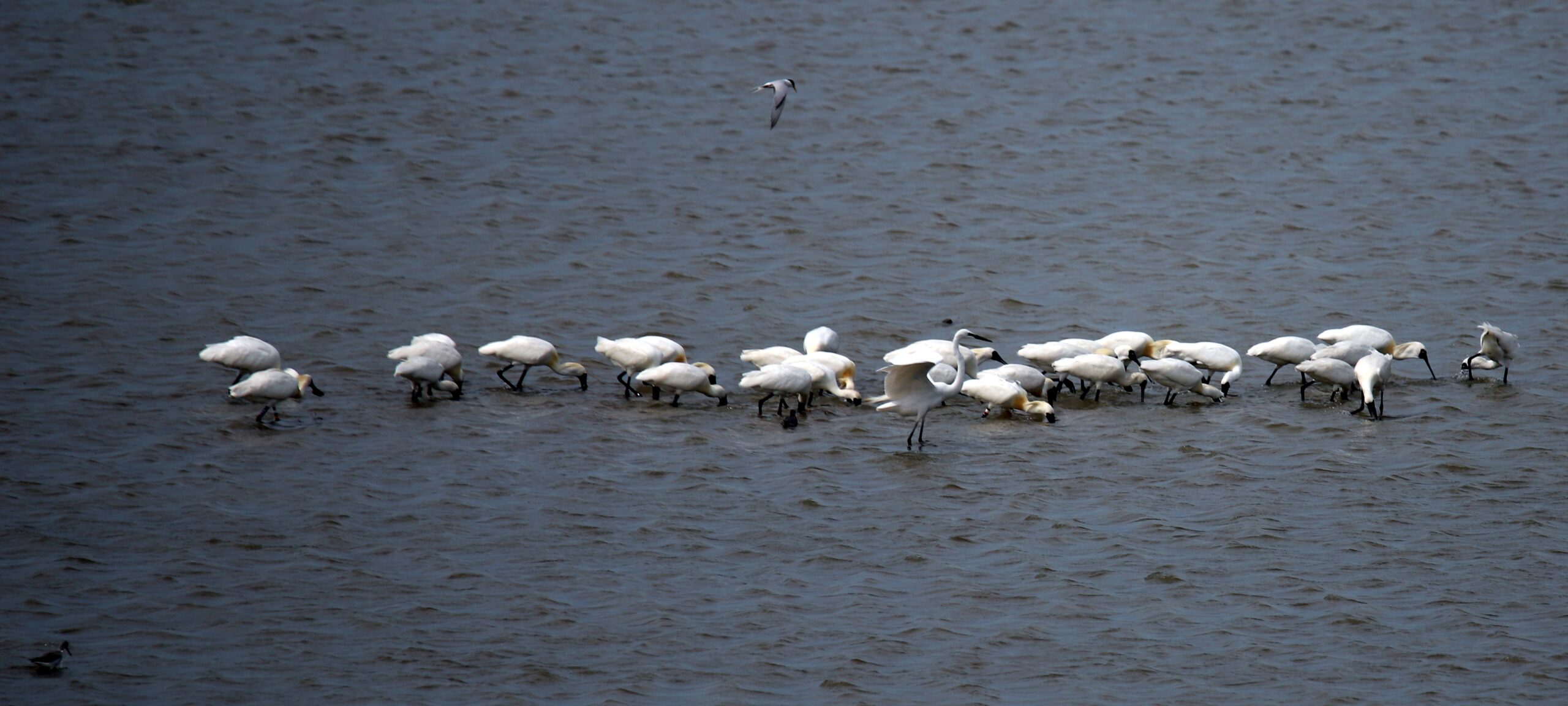
이제 얼마 남지 않은 화성습지의 도요·물떼새들도 마저 북쪽으로 떠나겠죠. 여기서 번식하는 친구들은 빼고요. 여름엔 저어새와 백로류, 민물가마우지 등이 주로 화성습지를 지키고 갈대습지엔 개개비와 해오라기 등이 노래하겠죠. 여름이 채 가기 전에 다시 도요·물떼새들이 찾아오고 오리·기러기 들도 화성습지를 찾을 것입니다. 북적북적하겠죠.
코헬렛에서 말하는 것처럼 인간의 가장 큰 행복은 결국 사랑하는 이와 함께 먹고 마시고 즐거워할 때일 것입니다. 새들의 삶도 같지 않을까요. 사랑하며 살아가는 새들의 모습을 이해하고 목격한다는 것은 매우 큰 행운입니다. 이러한 새를 포함한 자연을 사랑하는 사람은 분명 행복할 겁니다. (저는 행운아요 행복자입니다.) 이런 행복을 더 많은 이들이 누렸으면 좋겠습니다.
그러기 위해서는 새들이 언제 방문하더라도 안전하고 건강한 서식지가 필요하겠죠. 화성습지가 그러한 곳이 되기를 간절히 빕니다. 인간에게는 수산물과 쉼을 주는 좋은 일터요 휴식처로, 새와 뭇 존재들에겐 삶을 지속케 하는 무한한 생명의 공간으로 화성습지가 계속 거기 있기를 바랍니다. 습지는 보호가 필요합니다. 적실한 관리가 필요합니다. 다른 갯벌도 건강하게 잘 보전되기를 바랍니다. (이 주제는 언젠가 다시 얘기하겠습니다.)
얘들아, 올 가을 또는 내년 봄에 우리 꼭 다시 만나자! 그때까지 건강하게 지내!!
(제가 새와생명의터 블로그에는 처음 글을 써서 말이 매우 많았어요. 다음에는 좀 더 간단하게 쓰려고 해요.)
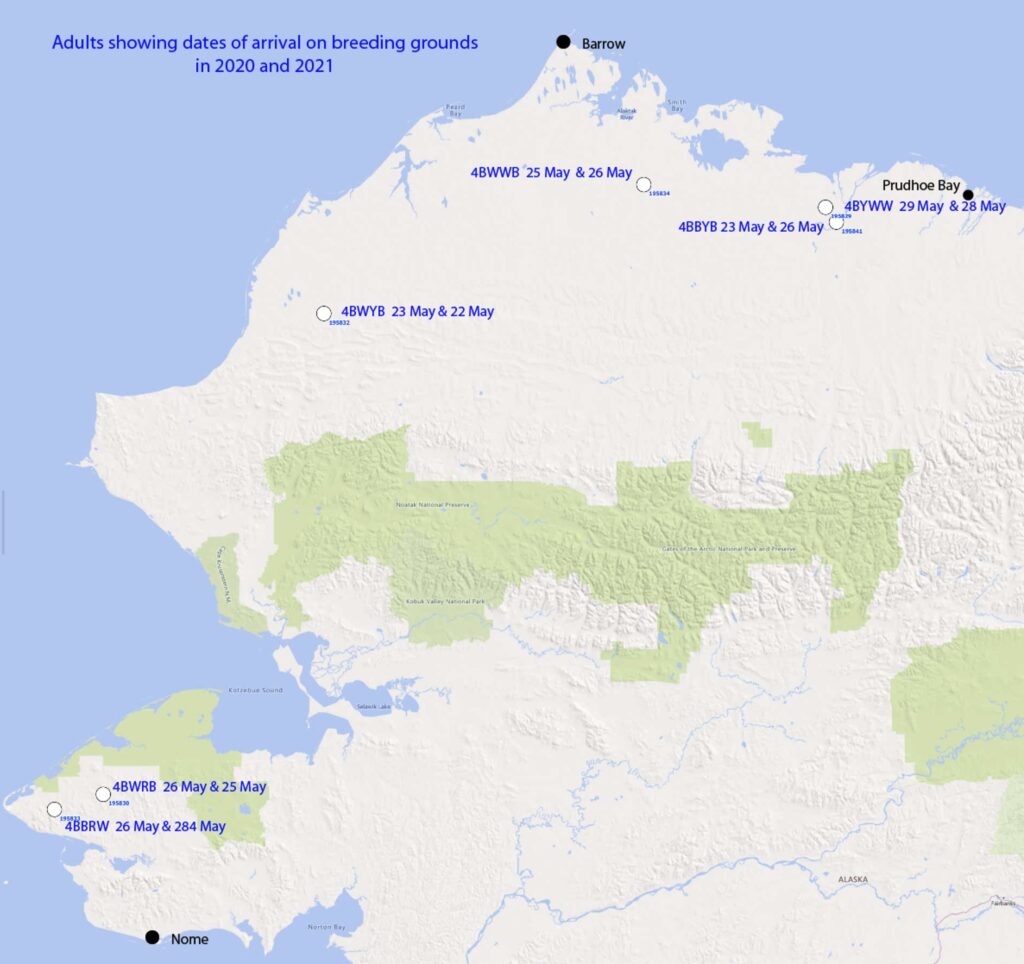
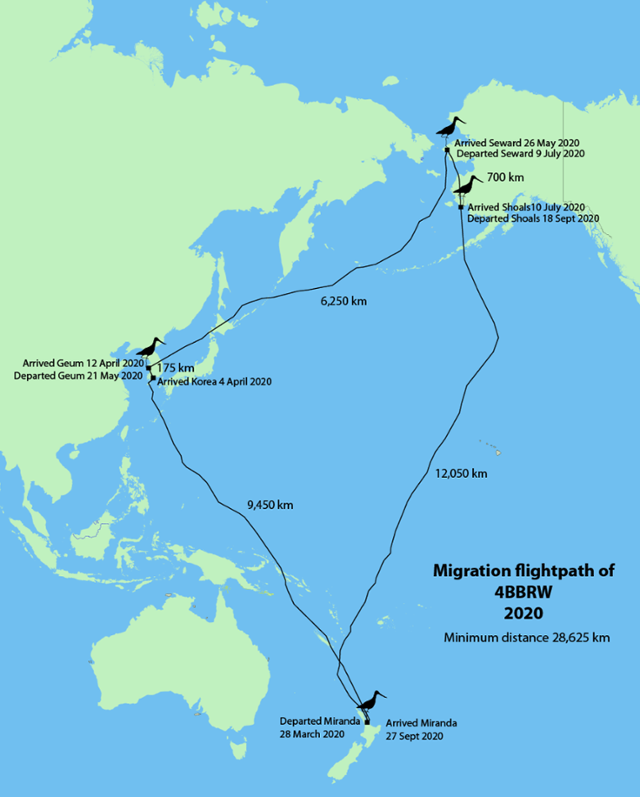
출처: Pukorokoro Miranda Shorebird Centre (http://www.miranda-shorebird.org.nz/wp-content/uploads/2020/10/)




